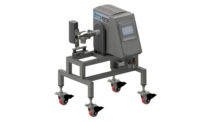Where can food industry professionals interested in hygienic equipment design find great practical foundation knowledge? Technical educational programs offered by universities and/or related institutions account for a lot, if and where such specialized training exists. In addition, many for-profit providers offer in-depth customized training, but it typically comes at a considerable cost which could limit its widespread delivery.
3-A SSI ventured into the education arena in May with the introduction of three new e-learning modules in a series designed to bring the world of hygienic equipment design to audiences around the world at any time of the day or night, free of charge. To be clear, the modules are not intended to compete with high-level university or corporate training programs, but they do offer valuable insights, especially for early career professionals of all stripes.
The three new modules include:
1.0. Overview of Principles of Hygienic Design & Foundation Elements
This module begins with a brief introduction to 3-A SSI and the important role it plays in hygienic design. This module emphasizes the holistic approach to hygienic design and the link between hygienic equipment design, facility design, cleaning and sanitation, operational design and the basics of quality and regulation.
2.0. The Basics of Hygienic Equipment Design
This training module covers the basic principles of hygienic equipment design for equipment that will be used to produce or process a wide variety of products for human consumption, as well as pet foods.
3.0. Basics of Hygienic Facility Design & Environmental Controls
This module provides the basics of design and environmental controls for food processing facilities. It covers non-product contact surfaces, air, water, steam utilities, as well as building interior, exterior and the overall site location. The subject matter addresses contamination and cross-contamination from a variety of sources that may create or transfer unhygienic conditions, including improper facility design, environmental sources, pests and operating personnel.
Each module is about one hour in length, and the specific learning objectives are clearly listed at the beginning of each one. Interactive assessment tools are included to support the learning experience. Each module is narrated and a script is provided for convenience.
Much of the content for the modules is derived from the comprehensive “ANSI/3-A 00-00-2014, 3-A Sanitary Standards for General Requirements,” a compendium of baseline sanitary (hygienic) criteria for design, materials and fabrication/installation of equipment and systems in various 3-A Sanitary Standards and 3-A Accepted Practices. The General Requirements standard is intended for use on a voluntary basis by equipment and machinery fabricators, processors and regulatory agencies, and by other Standard Developer Organizations (SDOs) to help assure that adequate public health protections exist for the equipment or systems used in the production of food products. The modules also reference criteria from the European Hygienic Engineering & Design Group (EHEDG) and other organizations.
Since May, 658 users from 23 countries around the world have completed the modules. The users represent a diversity of experience levels from a variety of organizations, including recognized processors, fabricators, regulatory professionals and universities. In fact, some universities intend to incorporate the modules into their other coursework.
User feedback is provided below:
- Great module, good explanations. Very good material. All maintenance supervisors and engineers in a food company should take modules as refresher courses if they had any previous training in these areas. (Processor)
- I found the questions throughout the module very helpful in keeping my attention, and was also a good check for myself as to whether or not I understood the information being presented to me. (Processor)
- Excellent info. Plan to use this for our plant staff. (Processor)
- Very helpful, even when not working in food industry. (Fabricator)
- I worked through the program with an eye toward using it as a teaching tool for extension and undergraduate education. I was pleased with the quality of the production and the ease of understanding. (University)
- I wanted to review this before recommending it to new designers and engineers. Having done so, I am going to recommend this is used as a training tool for all new employees in my organization. (Fabricator)
The modules are now available at www.3-a.org in the Knowledge Center or go directly to:http//www.3-a.org/Knowledge-Center/E-learning-Modules. Three new basics modules will be introduced in 2017, along with two advanced modules that will be available at a nominal price. 3-A SSI also expects to introduce onsite and on-location training programs based on the e-learning content in 2017.


